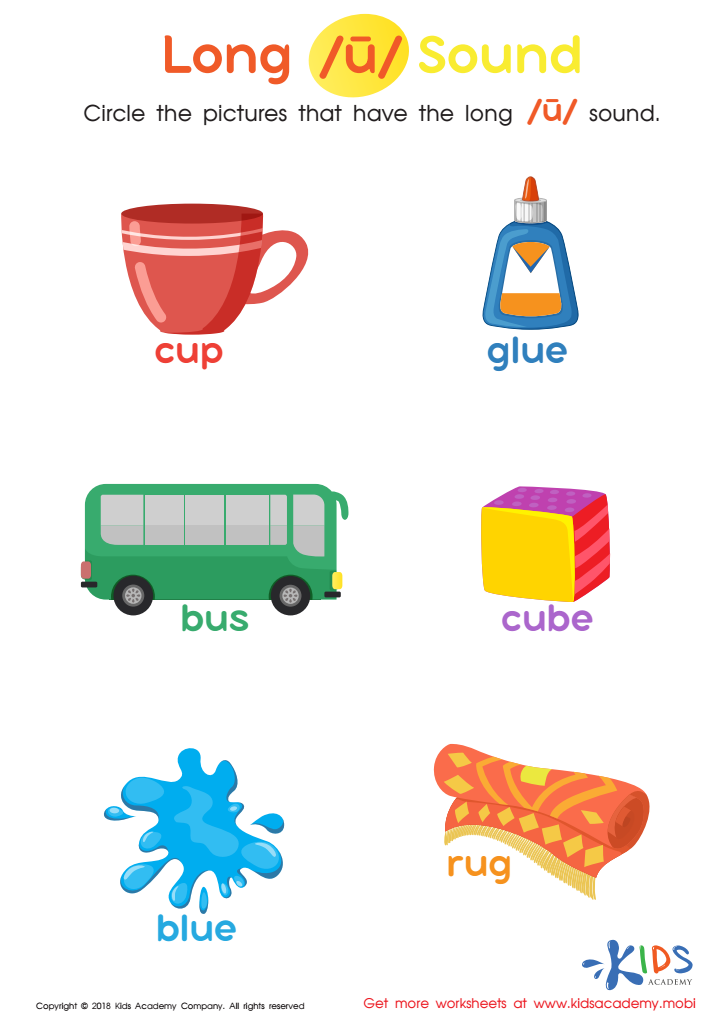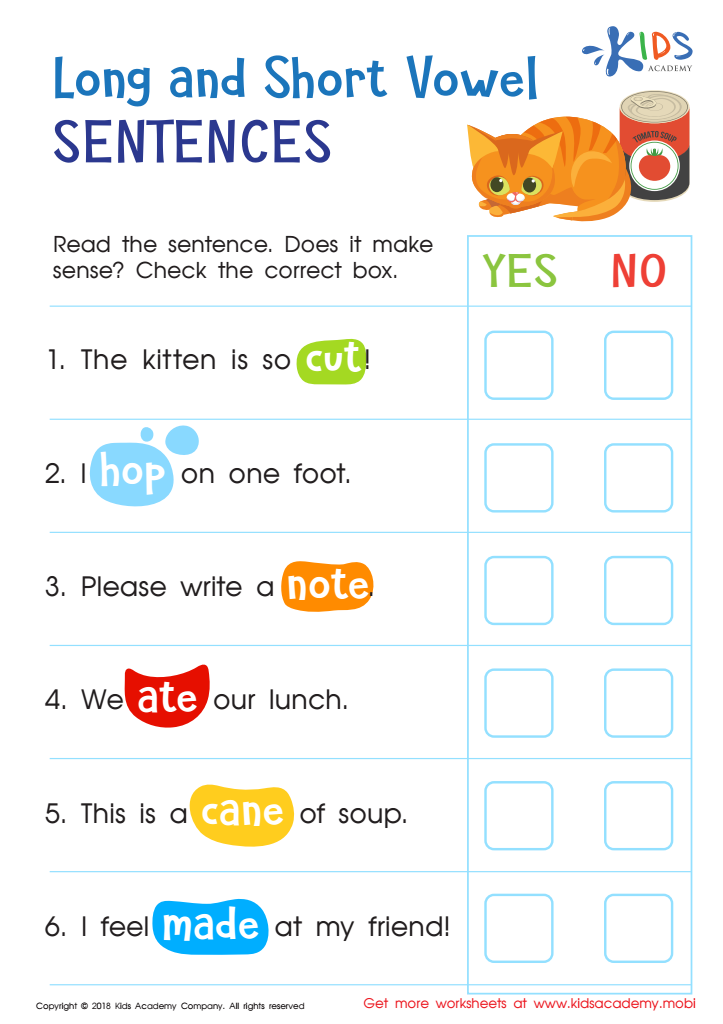Phonics Skills Normal Vowels and Consonants Worksheets for Ages 3-7
8 filtered results
-
From - To
Our Phonics Skills Normal Vowels and Consonants Worksheets are specifically designed for children ages 3-7, offering a comprehensive approach to mastering fundamental language skills. Featuring engaging activities and vibrant illustrations, these worksheets are perfect for developing early reading abilities. They help young learners distinguish between vowels and consonants, build phonemic awareness, and improve letter recognition. Tailored to different learning stages, our worksheets make phonics enjoyable and accessible. Boost your child's literacy journey with effective practice that lays the groundwork for advanced reading skills and lifelong learning. Ideal for parents and educators seeking reliable, age-appropriate resources.


Reading: Long O Digraphs Worksheet


Short Vowels /e/, /i/, and /u/ Worksheet


Reading: OW and OU Words Worksheet


Reading: AW and AU Words Worksheet


Long «u» Sound Worksheet


Reading: AW Words Worksheet


Long and Short Vowel Sentences: Assessment Worksheet


Matching Consonant Sounds: Part 1 Worksheet
Phonics skills, particularly understanding normal vowels and consonants, are fundamental for children aged 3-7 as they form the cornerstone of early literacy. When parents and teachers focus on these skills during these crucial formative years, they are essentially equipping children with important tools for reading and writing proficiency.
First, phonics instruction helps young children understand that written language is a code, and learning this code is essential for decoding (reading) and encoding (spelling). By distinguishing normal vowels and consonants, children learn to blend sounds to form words and segment words into individual sounds, which improves their reading accuracy and fluency.
Second, a strong phonics foundation bolsters children's confidence and motivation. As they start to read successfully, their excitement grows, nurturing a lifelong love for reading. This early achievement is linked to greater academic success overall.
Finally, early proficiency in phonics contributes to better comprehension skills. When children can easily decode words, they can focus more on understanding the text rather than struggling with word recognition. This leads to improved vocabulary, better analytical thinking, and enhanced communication skills.
Investing in phonics education at ages 3-7 sets the stage for a robust educational journey, giving children the skills they need to succeed in school and beyond.
 Assign to My Students
Assign to My Students








